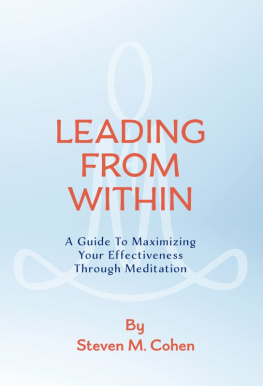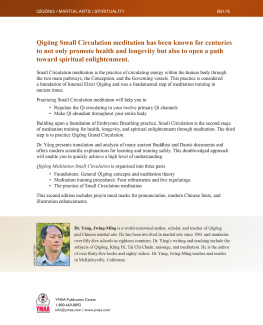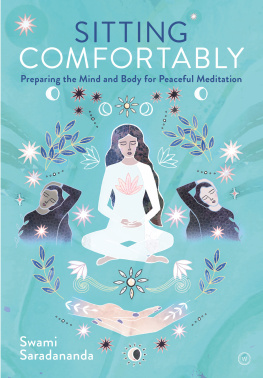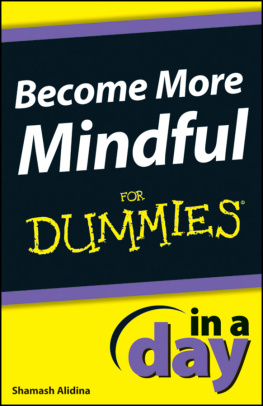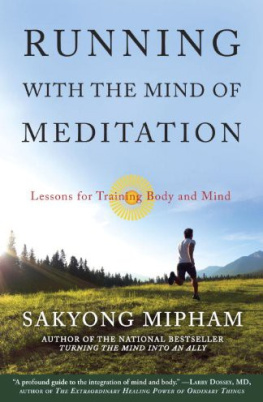Omori Sogen Roshis classic text is a treasure for anyone wishing to learn more about the practice of Zen meditation. It is truly a transformative work.
Shunmyo Masuno, chief priest of Kenkoh-ji temple and author of The Art of Simple Living: 100 Daily Practices from a Japanese Zen Monk for a Lifetime of Calm and Joy
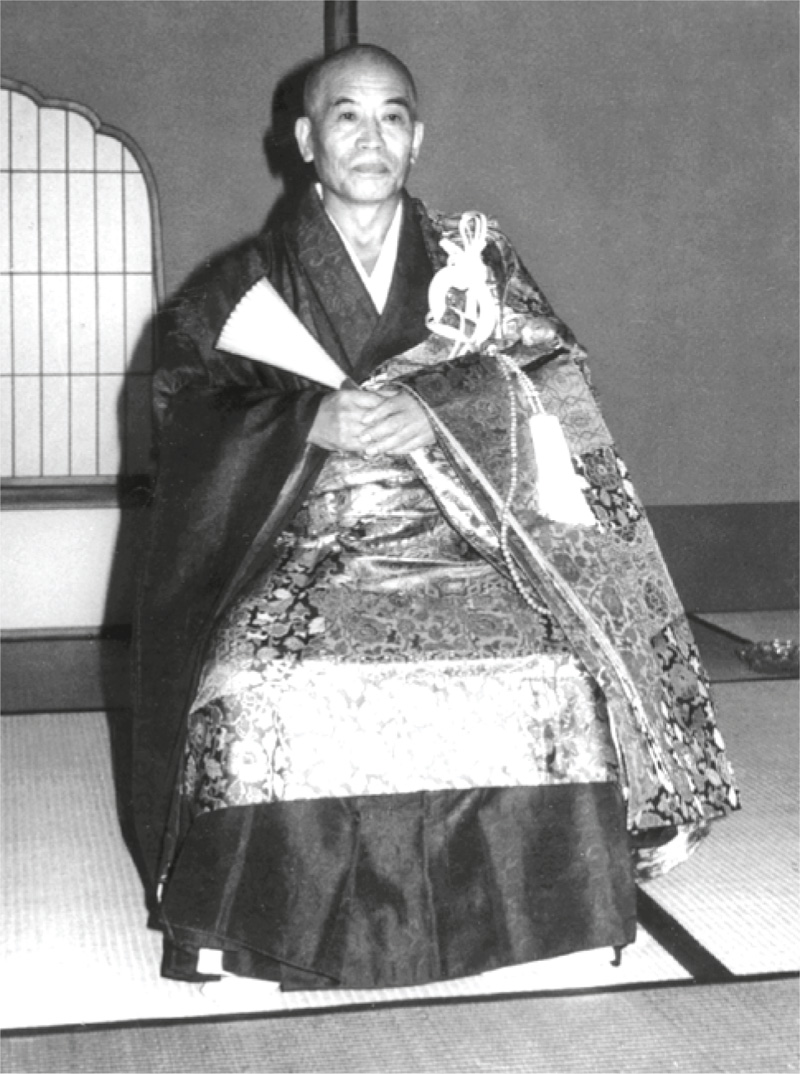
Omori Sogen Rotaishi at his Kaido ceremony, October 1975. This was the ceremony that indicated recognition by the Rinzai Archbishops and Abbots of Japan that he is the direct dharma successor of the Tenryu-ji line of Rinzai Zen.
The Classic Rinzai Zen Manual
Introduction to
ZEN
TRAINING
A Physical Approach to Meditation and Mind-Body Training
Omori Sogen
With a new foreword bySayama Daian & Michael Kangen
Introduction byTrevor Leggett

CANON
Zen is to transcend life and death (all dualism), to truly realize that the entire universe is the True Human Body through the discipline of mind and body in oneness. Miyamoto Niten (Musashi) called it Iwo no mi (a bridge round like a ballbeing in accord with the myriad changes of life). Besides this actual realization, there is nothing else.
Zen without the accompanying physical experience is nothing but empty discussion. Martial ways without truly realizing the Mind is nothing but beastly behavior. We agree to undertake all of this as the essence of our training.
All our students, strive diligently! Gentlemen of the Rinzai Honzan (Main Temple) in Japan, open your eyes to this and together let us send it out to the world.
Archbishop Omori Sogen Rotaishi,
Dated 1 October 1979
NOTES
Note (): For these phrases, Omori Rotaishi used old Japanese. The modern pronunciations would be Iwao no mi and Marubashi no michi respectively.
ACKNOWLEDGMENTS
Finding Sanzen Nyumon ready to appear in English leaves us grateful to the many people who made it possible. The work of Tenshin Tanouye Rotaishi, Archbishop of Daihonzan Chozen-ji and dharma successor to Omori Rotaishi, has been foremost as he steadfastly insisted that the kiai or energy/spirit of Omori Rotaishis words be of primary significance in the translation. We are grateful as well to Yoshie Omori for permission to translate her late husbands work from Japanese.
Trevor Leggett has been writing for almost forty years about the relationship between Zen and budo or martial arts and we have long relied upon his work in the teaching at Daihonzan Chozen-ji. We are honored that he consented to write a personal introduction to Omori Rotaishi and his text. Many years ago Jackson Morisawa first drew the figures that illustrate the principles of posture and breathing outlined in and they have served us well as aids to teaching zazen.
Arthur Koga, Director of the Institute of Zen Studies, led the final push to get the manuscript into print. In this effort, he was assisted by Gordon Greene, Teri Kaneshiro, Kristine Khoo, Sandra Kunimoto, Beverly Mukai, Cheryl Okazaki, and Betty Whitmore. Neal Kunimura, a long-term supporter of our publishing program, provided the well-equipped setting in which Gregg Kam worked long hours to make the manuscript press-ready. Our thanks as well go to the numerous Dojo members who offered financial support over the last year of work.
Dogen Hosokawa Roshi, Abbot, Daihonzan Chozen-ji
Roy Yoshimoto
NEW FOREWORD
Introduction to Zen Training is a daring book by a daring manOmori Sogen. Renowned Zen Master, swordsman, and calligrapher, Omori Rotaishis impact has continued to resonate around the world, even 25 years after his death. In 1964 he wrote:
Human alienation, loss of self, human development, and restoration of autonomy are now popular phrases. In fact, we may say there has never been a time where Zen has been needed as much as today when solutions to these problems are so urgently needed.
We could easily say the same today.
In 1972, eight years after he wrote Introduction to Zen Training as Sanzen Nyumon, Omori Sogen founded our temple in Hawaii, giving us the name Chozen-ji, The Temple of Zen Transcending Zen. This book and Chozen-ji are inseparable as they both look to transmit the essence of Zen beyond any imposed boundaries. Omori Sogen also established Chozen-ji as the first daihonzan, or headquarters temple, to be established under canon law outside of Japan. With the name Chozen-ji and our status as a daihonzan, he was challenging us to discard the forms of Zen that are obstacles to training in the modern world, but without compromising its purpose.
When the English edition of this book was first published, the Japanese edition was not alteredonly photos and captions from Chozenji were added. Also added were an introduction from Trevor Leggett, a foreword from Tanouye Tenshin and the Canon from Chozen-ji. There is really no update needed to their contributions, and the photos from 1996 still reflect the striking beauty of Chozen-jis grounds today. But the one message worth adding to this new edition is that Chozen-ji, and in turn Omori Sogens legacy, are still vibrantly alive in the 21st century.
The training principles that Omori Rotaishi outlines in this book continue to be put into rigorous practice. In the first line of our Canon, he wrote, Zen is to transcend life and death (all dualism) to truly realize that the entire universe is the True Human Body through the discipline of mind and body in oneness. Together with Tanouye Tenshin, his Dharma successor in Zen and a genius in the martial arts, Omori Rotaishi gave practical form to the discipline of mind and body in oneness at Chozen-ji. They developed an approach to entering Zen through the body and the Ways. They established zazen, the Hojo (martial arts form) and sesshin (six day intensive training retreats to collect the mind) as core practices to foster samadhi (a concentrated state of body/mind) and kiai (energy, vitality).
In its basic form, zazen is sitting meditation and provides the easiest conditions in which to experience samadhi by refining breath, posture, and concentration in stillness. Students start by learning to sit in a stable position for 45 minutes without moving. They face each other across the room, count their breaths, breathe from the lower abdomen, see 180 degrees with eyes gazing down, and sense everything. In zazen, the mind and body are unified like that of a swordsman facing an opponent or a cat ready to pounce on a rat. Omori Rotaishi scorns sitting vacuously as the ghosts cave at the foot of the black mountain. He also warns:
Zazen should never become a means of making yourself feel good nor should it be a tranquilizer to settle excitement and wild thoughts. What is of primary importance is what the ancients called no gaining and no merit. Indeed, zazen consists in awakening us to our own essence so as to secure and express our True Selves in everyday conduct.
This spirit of taking the training into everyday life is a critical feature of Omori Sogen and Chozen-jis approach to Zen. This entire processfrom developing samadhi in stillness, then in movement, and then in an artbecomes a Way to realize the True Self and be an artist of life. In his second sentence of our Canon, Omori Rotaishi described this actual realization with the sayings of two great swordsmen in Japanese history: Miyamoto Musashis, Iwo no mi (body of a huge bouldergoing through life rolling and turning like huge boulder), and Yagyu Sekishusais,
Next page

